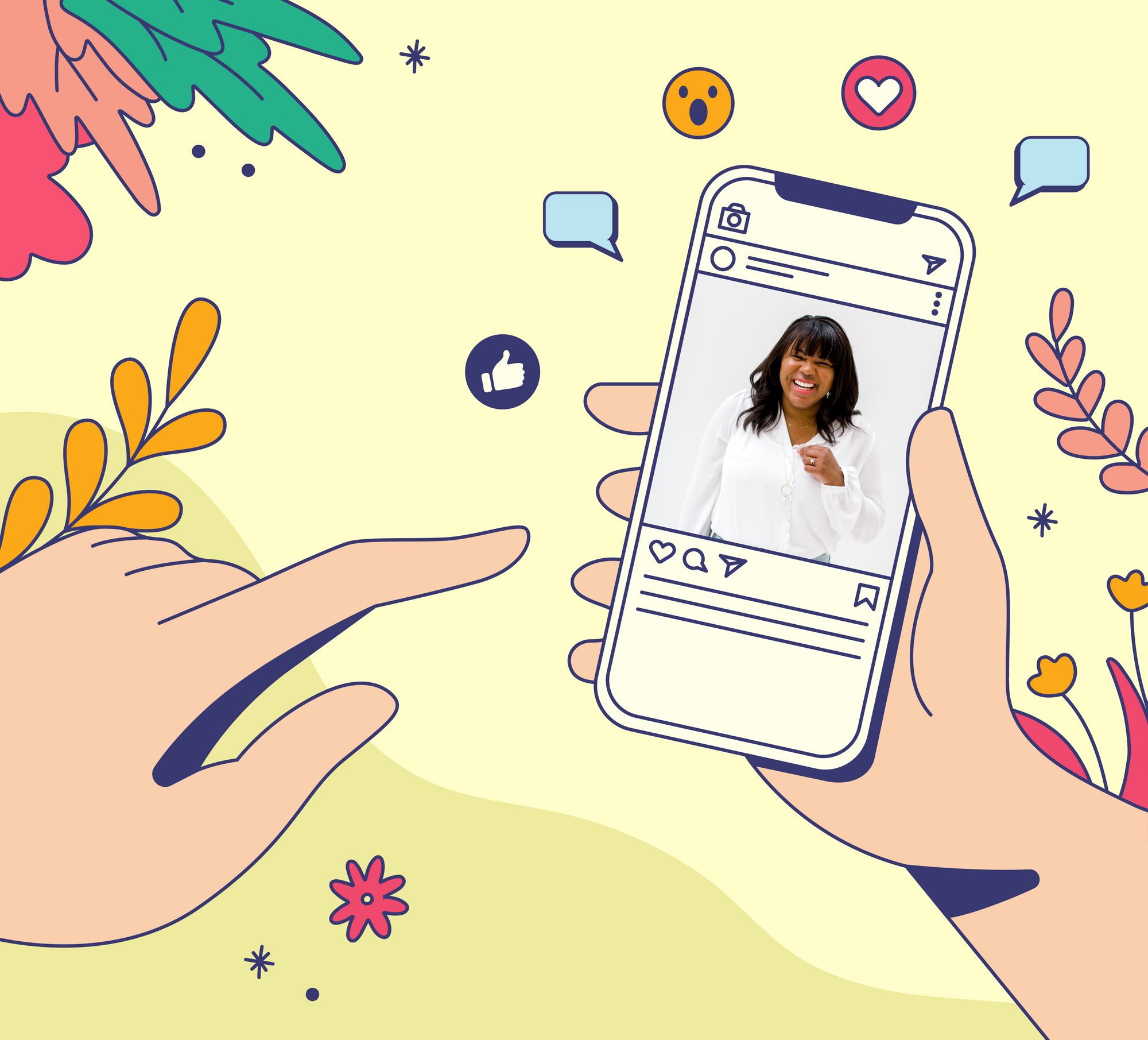It’s safe to say that 2021 is the year of the social media influencer. ✨
BigCommerce defines influencer marketing as a strategy where businesses sponsor influencers to create content and post about their products or services. Influencers and sponsored content bring brands great awareness and sales by effectively communicating to their niche audiences.
Influencer marketing has skyrocketed over the past couple of years. But, it’s been an active method of connecting with consumers for at least 15 years! Before Instagram became the household name of social media apps, it was common for brands to collaborate with bloggers on sponsored posts in an “online diary” format.
But things have significantly changed since 2005. As technology and social media evolved, influencer marketing has transformed into more engaging mediums like short-form videos and quick Instagram Stories. Apps like TikTok and Snapchat are now projecting creators and their content to higher heights.
The pandemic has helped accelerate the rapid rise of influencers in the marketing industry. Take it from research firm eMarketer, who predicts that spend on influencer marketing will surpass $3 billion this year! We spent more time on our devices and online during days of lockdowns and stay-at-home orders, resulting in an ecommerce boom (which is still going strong) and steady demand from audiences for more influencer content.
Content produced by influencers often feels familiar to many of us because of how authentic they are. Relatability and transparency are huge factors in attracting followers to their favorite creators, which is why more businesses are diving into the highly successful influencer marketing wave.
✅ Influencers are a one-stop-shop for brands
When travel and high-end content production are off the table for many brands, it makes sense to turn to independent content creators to pick up where they left off. Influencers are known for making user-generated content that speaks to their followers, without the bells and whistles of fancy filming equipment or elaborate sets.
For a business’ bottom line, this means that partnering with influencers is a win-win situation in saving time and money while fostering mutually beneficial relationships with creators.
🌟 Micro-influencers lead to macro sales
Influencers have a strong grasp on reaching younger shoppers. Nearly half of those who identify as Gen Z have made a purchase after seeing a product or brand promoted by an influencer.
When it comes to what kinds of influencers are leading the pack, smaller social stars resonate most with audiences. 92% of Gen Z consumers place more of their trust into micro-influencers – influencers with followers between 1,000 and 50,000 – than traditional celebrity endorsements or advertisements.
🤝 Jumpstart your brand’s influencer strategy
Partnering with social media influencers is one of the most effective ways for brands to form stronger connections to consumers through authentic and personalized content. But, it can be easy to get intimidated by the process of identifying the right influencer to represent your brand, creating compelling content, and reaching your audience.
If you’re thinking about switching up your marketing approach to start collaborating with influencers, keep reading! We sat down with Asa Herrman, owner of small business Lace & Pearls Jewelry and a former full-time blogger. Below, Asa shares the tricks she gained from her time as a blogger and sponsored content creator. Dive into Asa’s tips for bringing social star power into play and what makes influencer partnerships so great for small businesses!
Q&A with Asa Herrman of Lace & Pearls Jewelry
What should small businesses know about influencer marketing before approaching and tapping influencers for collaborations? What do influencers wish brands knew before pitching?
Before approaching an influencer with a pitch, it’s important to understand that the majority of influencers have a day job while others are full-time. So while the job may seem glamorous and easy, it’s still a job and takes a lot of effort on the influencer’s end as they might be juggling multiple campaigns, deliverables, and contracts.
When it comes to pitching, be as specific as possible and provide them with relevant information to help them determine whether a campaign is a good fit. Ask them for their rate. If you don’t have a budget, let the influencer know what you are able to provide in exchange for their work: gifted product, commission, discount codes for followers, an ambassador program, etc.
Don’t be swayed by a person’s following. A micro-influencer or someone with a smaller following is awesome to work with. They often have a better relationship with their audience and work harder to prove that they belong. A large audience doesn’t always equate to sales.
What are the top 3 things influencers are most looking for when working with small businesses, such as those that may not have influencer budgets?
- Do they like the product and would they use it
- Brand mission and values
- Ethically sourced and or sustainability.
What are 3 ways that small businesses can ensure that the influencers they are collaborating with are a good fit for their brand?
The biggest way to determine if an influencer is a good fit is to:
- Do your homework. Check out their social media platforms, the quality of content, and writing style and voice.
- Look at the type of content they create. Are their images cropped correctly for the platform and high quality?
- Determine if they’re in the right niche. For example, if you approach a fashion blogger who has no kids and ask them to promote a children's product, the influencer can tell that the brand didn’t do their research.
What are the benefits of having influencers as brand ambassadors, versus doing a one-time exchange?
Most people have to see a product multiple times before making a decision. Having an ambassador program allows potential customers to experience that. Most influencers have already established trust with their audience so having them share about the brand long-term will only strengthen the campaign.
One-off campaigns are good if you are looking to create brand awareness or receive high resolution photos that can be re-shared via marketing campaigns, social media, and ads. Make sure to create a contract where photo and video (if relevant) usage rights are clearly stated.
What are some best practices that small businesses can do when reaching out to influencers?
Make the email personable. Influencers receive a lot of pitches and it’s easy to tell when the same email is being sent to hundreds of people with no personalization.
Do your research and make sure it’s a good fit before sending a pitch.
If possible, address them by name instead of something generic like “sir/madam” or using their social handle.
Should a brand keep deliverables open to an influencer’s interpretation, provide a detailed creative brief, or a mix of both?
It is better to over-communicate than to under-communicate. Don’t leave things up to interpretation. Make it easy for both parties and list out what you want. You don’t want an influencer to go through scheduling a shoot with a photographer, record a video, write a blog post only to deliver it and it may not be what you want. This can be easily avoided if all of the expectations are listed out from the beginning. Brands can even go as far as sharing how they want their images shot (ex: bright and airy, preferably outside, no flat lays, etc). Including example pictures are also helpful.
The creative brief should include the following:
- Campaign overview
- Timeline
- Deliverables
- Photo usage rights
- Exclusivity terms
- Other relevant information such as IG handle, hashtags, disclosure of partnership example #Sponsored #Ad.
What is the best way in which brands can measure the success of their influencer collaborations?
There are several ways to measure success, the first being your experience with the influencer as a whole. Was the influencer professional? Did they deliver on what you agreed upon? What was the quality of work? Did the Influencer over-deliver? Are you happy with the overall results?
Second, taking a look at campaign analytics, both for the brand and influencer. Brands often ask for the following analytics: IG stories, static posts, and blog traffic screenshots. Brands should also look at their own stats: follower count, engagement rate, website traffic, sales.
What are a few indicators of a good ongoing relationship between influencers and the small business they collaborate with?
- The brand and influencer feel like they’re equally benefiting from the partnership.
- Both parties are communicative and respond to emails in a timely manner.
- Both have expressed interest in continuing to work with each other in the future.
🎁 Wrapping it up
Power up your business by tapping influencers aligned with your brand’s values and start creating away together! Keep Asa’s tips in mind and stay true to your branding while incorporating influencer content to speak to your customers genuinely. Have fun with it, too!
See more of Asa by following Lace & Pearls Jewelry on Instagram! Don’t forget to check out her small jewelry business.
Master your brand’s marketing, social media, and branding through our Biz Advice column on The Wrap!

